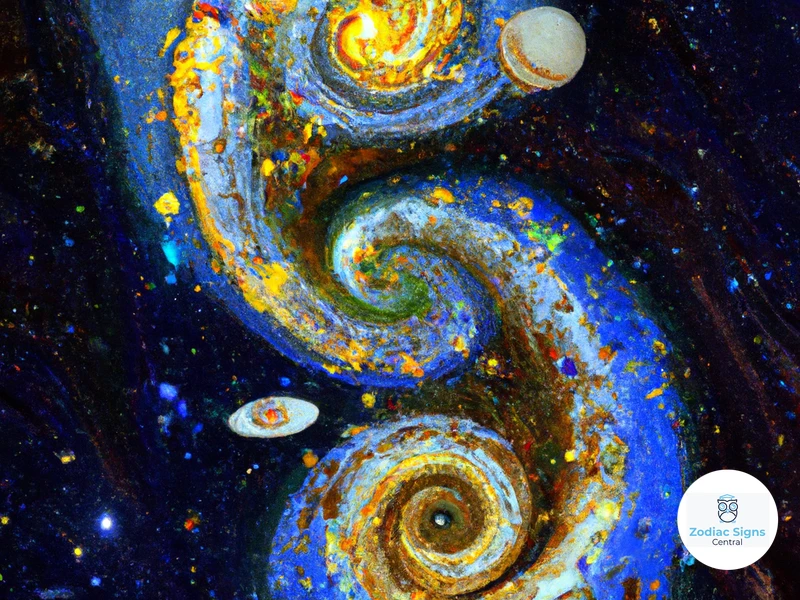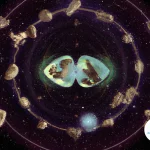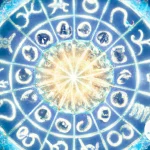Welcome to the fascinating world of astrology and personality traits! Have you ever wondered how the different aspects in astrology influence our unique characteristics and traits? In this article, we will dive deep into the concept of aspects and explore their impact on our personalities. Whether you are a seasoned astrologer or a curious beginner, this comprehensive guide will provide you with valuable insights into the various types of aspects and how they shape who we are. Get ready to uncover the secrets of astrology and gain a deeper understanding of the intricate connections between the celestial bodies and our individual natures. Let’s embark on this enlightening journey together!
What Are Aspects in Astrology?

Aspects in astrology refer to the specific angles formed between two celestial bodies within a birth chart. These angles reveal the energetic interactions and relationships between the planets, providing valuable insights into an individual’s personality and life experiences. Astrologers analyze aspects to understand how different planetary energies interact and influence each other. Each aspect carries a unique energetic signature, which impacts the way we express ourselves, our emotional tendencies, and our approach to different areas of life. By studying aspects, astrologers can gain a deeper understanding of a person’s strengths, challenges, and potential areas of growth. Aspects can create a wide range of influences, from harmonious and supportive connections to more challenging and conflicting energies. Understanding the aspects in your birth chart can help shed light on various aspects of your life, such as career success role-planetary-placements-career-success, friendships, like how an Aquarius blends with independent signs aquarius-friends-blend-with-independent-sign, or the charismatic and bold nature of a Leo leo-charismatic-bold-sign.
Types of Aspects
In astrology, there are various types of aspects that form between planets in a birth chart. Each aspect represents a unique energetic connection that influences a person’s personality and life experiences. Conjunction occurs when two planets are in close proximity to each other, amplifying their combined energy. The opposition aspect arises when planets are directly across from each other, creating a tension between their energies. A square aspect forms when planets are 90 degrees apart, creating a dynamic and challenging relationship. The trine aspect occurs when planets are 120 degrees apart, creating a harmonious and supportive connection. A sextile aspect forms when planets are 60 degrees apart, bringing opportunities for growth and collaboration. The quincunx aspect arises when planets are 150 degrees apart, creating a sense of unease and adjustment. The semi-sextile forms when planets are 30 degrees apart, creating a subtle and harmonious connection. The semi-square occurs when planets are 45 degrees apart, bringing tension and challenges. The sesqui-square aspect forms when planets are 135 degrees apart, creating a sense of frustration and tension. Lastly, the quintile aspect occurs when planets are 72 degrees apart, bringing creativity and unique expressions. Each type of aspect adds its own flavor and influences the dynamics of an individual’s personality and life journey.
1. Conjunction
1. Conjunction: A conjunction occurs when two planets are positioned in close proximity to each other, usually within the same zodiac sign. This alignment creates a powerful blending and merging of energies between the planets involved. Conjunctions bring together the qualities and influences of the planets, amplifying their impact on an individual’s personality. They can signify intense focus and concentration on the traits associated with those planets.
For example, a conjunction between Mars and Venus can indicate a passionate and charismatic nature, where the assertive and driven qualities of Mars are combined with the love and beauty-oriented attributes of Venus. People with this aspect may possess a magnetic charm and an ardent desire for connection and harmony in relationships.
In a birth chart, the specific sign and house placement of the conjunction will further refine the expression of this aspect. A conjunction in Aries, for instance, may result in a confident and assertive approach to relationships and creative endeavors, while a conjunction in Taurus can manifest as a strong desire for stability and sensuality in these areas of life.
It’s important to note that while conjunctions can bring great potential and strength, they can also present challenges. The combined energies of the planets may create internal conflicts or an overpowering influence in certain areas of life. Astrologers carefully analyze the other aspects and placements in the birth chart to understand how the conjunction relates to the overall personality and life experiences of an individual.
2. Opposition
The opposition aspect in astrology occurs when two planets are approximately 180 degrees apart in the birth chart. This aspect represents a significant polarity and tension between the energies of the involved planets. It highlights the need to find balance and integration between the opposing forces. When planets are in opposition, they often represent contrasting qualities or areas of life that require attention and resolution. For example, a person with the Sun opposing the Moon may struggle to reconcile their emotional needs with their ego and identity. This aspect can bring about inner conflicts and challenges in finding a harmonious balance between personal desires and emotional fulfillment. Similarly, the opposition between Mars and Saturn can create a struggle between assertiveness and discipline, leading to a push-pull dynamic in taking action and setting boundaries. It’s important to note that oppositions can also manifest externally through relationships and interactions with others. They can bring about dynamic and intense connections, as well as opportunities for growth and understanding. The key to navigating the opposition aspect is to find a middle ground and integrate the opposing energies to achieve a sense of wholeness and harmony.
3. Square
A square aspect in astrology is formed when two planets are approximately 90 degrees apart. It is considered a challenging aspect that creates tension, friction, and a sense of conflict between the energies of the planets involved. This tension can manifest in various areas of life, causing internal and external struggles. The square aspect primarily represents obstacles and lessons that need to be learned and overcome. It pushes individuals to confront and address areas of their lives where they feel stuck or limited. The planets involved in a square can signify the specific areas of life that are affected by this aspect. For example, a square between Mars and Saturn may indicate challenges related to ambition, drive, and discipline. It can manifest as a struggle to take action or difficulty in managing responsibilities. While the square aspect can be challenging, it also offers an opportunity for growth and development. It encourages individuals to become aware of their limitations and seek solutions to overcome them. By confronting and working through the challenges presented by the square aspect, individuals can cultivate resilience, determination, and a deeper sense of self-awareness. Understanding the square aspect in your birth chart can provide valuable insights into the areas of your life that may require attention and effort to achieve personal growth and transformation.
4. Trine
The trine aspect in astrology is considered one of the most harmonious and positive connections between two planets. When two planets are in a trine aspect, they are approximately 120 degrees apart on the birth chart, forming a flowing and supportive energy. The trine aspect signifies ease, creativity, and a natural flow of energy between the planets involved. It is often seen as a fortunate aspect that brings blessings and opportunities into a person’s life. Those with prominent trine aspects in their birth chart are often gifted with innate talents, as the energy of the planets involved effortlessly blends together. This aspect promotes harmony, cooperation, and a sense of ease in expressing oneself. It can manifest as a natural affinity for certain skills or areas of life, making success and achievement come more easily. However, it’s important to note that a strong trine aspect can also lead to complacency or taking things for granted. It is crucial for individuals with trine aspects to leverage their natural gifts and not rely solely on their innate abilities. By recognizing and nurturing the potential of a trine aspect, individuals can harness its positive energy and make the most of the opportunities it brings.
5. Sextile
A sextile is a harmonious aspect in astrology that occurs when two planets are approximately 60 degrees apart. This aspect creates a supportive and flowing energy between the planets involved, allowing their energies to work together harmoniously. The sextile is considered a positive aspect, bringing opportunities for growth, creativity, and cooperation.
When two planets form a sextile aspect, they enhance and complement each other’s energies, creating a sense of ease and flow. This aspect encourages communication, collaboration, and the blending of different qualities and strengths. It facilitates the exchange of ideas and the ability to find practical solutions to challenges.
The sextile aspect encourages personal development and the exploration of new possibilities. It promotes growth and expansion, enabling individuals to tap into their full potential. This aspect often brings opportunities for learning, networking, and building positive relationships. It can support career advancements, creative projects, and personal growth endeavors.
In a birth chart, the sextile aspect indicates areas of natural talent and ease. It represents hidden potentials and indicates areas where individuals can excel with relatively less effort. However, it is important to remember that while the sextile aspect brings favorable opportunities, it still requires effort and action to fully benefit from its potential.
The sextile aspect offers a positive and harmonious influence in astrology. It encourages cooperation, growth, and the realization of one’s potential. By embracing the opportunities presented by the sextile aspect, individuals can leverage their unique strengths and navigate life with a sense of ease and fulfillment.
6. Quincunx
The Quincunx aspect, also known as the Inconjunct, is an astrological aspect that occurs when two celestial bodies are approximately 150 degrees apart. This angle creates a sense of tension and imbalance between the energies of the planets involved. The Quincunx aspect often represents a challenge or adjustment that needs to be made in a person’s life. It can bring about a feeling of unease or dissatisfaction, as the energies of the planets involved do not naturally blend together. This aspect requires individuals to find a way to integrate and reconcile the conflicting energies in order to find harmony and balance.
When the Quincunx aspect is present in a birth chart, it can manifest as a constant need to make adjustments and adapt to different situations. It may indicate a struggle to find a sense of belonging or a difficulty in expressing oneself authentically. The Quincunx aspect promotes growth and transformation by forcing individuals to confront and resolve conflicting aspects of their personality. It urges them to seek creative and innovative solutions in order to navigate the challenges presented by this aspect. While the Quincunx can be a source of frustration, it also offers an opportunity for personal growth and self-discovery.
7. Semi-Sextile
The Semi-Sextile aspect, denoted by a 30-degree angle between two planets, brings a subtle and nuanced influence to astrology. This aspect creates a connection between two celestial bodies that are not traditionally compatible but still have the potential to work together in a harmonious manner. The Semi-Sextile represents a supportive and cooperative energy between the planets involved, although it may require some effort to fully tap into its benefits. This aspect encourages flexibility, adaptability, and compromise in relationships and situations. It fosters a sense of understanding and cooperation, allowing individuals to find common ground and create harmonious partnerships. The Semi-Sextile aspect can also bring about opportunities for personal growth and development through the blending of the energies of the planets involved. It may require a conscious effort to fully embrace this aspect’s potential, as it can sometimes be overshadowed by more dominant aspects in the birth chart. However, when utilized effectively, the Semi-Sextile can bring balance, collaboration, and a sense of ease to various aspects of life.
8. Semi-Square
The semi-square aspect in astrology is an angle of 45 degrees between two celestial bodies in a birth chart. It is considered a challenging aspect that creates tension and friction between the energies of the planets involved. The semi-square aspect combines the qualities of both the square and the opposition aspects, resulting in a sense of unease and conflict. This aspect reveals areas of internal struggle and can indicate a tendency to experience frustration and setbacks in the corresponding areas of life. Individuals with a prominent semi-square aspect in their birth chart may often feel a strong inner drive to overcome obstacles and achieve their goals, but may also face difficulty in finding constructive ways to channel their energy. The semi-square aspect is associated with a sense of urgency and impatience, which can lead to impulsive decision-making and a tendency to push too hard for progress. However, despite its challenges, the semi-square aspect can also serve as a catalyst for growth and personal development. It forces individuals to confront their internal conflicts and learn valuable lessons from the resulting experiences. By recognizing and working with the energy of the semi-square aspect, individuals can embrace the opportunity for self-transformation and achieve a greater sense of balance and harmony in their lives.
9. Sesqui-Square
9. Sesqui-Square: The sesqui-square aspect in astrology is often considered a challenging one, bringing about a sense of tension and unease. It occurs when two planets are approximately 135 degrees apart, creating a square and a semi-square aspect combined. This aspect is believed to generate inner conflict, friction, and a feeling of dissatisfaction. Individuals with a sesqui-square aspect in their birth chart often feel a constant sense of pressure and struggle. They may have a hard time finding balance and may experience difficulties in reconciling different areas of their life. This aspect can manifest as a need for change and transformation, as individuals with a sesqui-square aspect are often driven to overcome obstacles and strive for growth. It may push them to challenge societal norms and seek alternative paths in life. Despite the challenges it brings, the sesqui-square can also be a source of strength and resilience, as individuals with this aspect learn to navigate through adversity and find creative solutions to their problems. It is important for individuals with a sesqui-square aspect to cultivate self-awareness and learn to manage their inner conflicts effectively.
10. Quintile
The quintile aspect in astrology occurs when two planets are approximately 72 degrees apart. It is considered a minor aspect but carries significant meaning. The quintile represents a harmonious and creative connection between the planets involved. Individuals with a quintile aspect in their birth chart often possess unique talents, creative abilities, and original thinking. This aspect enhances their ability to tap into their creative potential and manifest innovative ideas. People with a quintile aspect frequently excel in artistic pursuits, problem-solving, and finding unconventional solutions. They have a knack for thinking outside the box and can offer fresh perspectives in various areas of life. The energy of the quintile promotes inspiration, individuality, and a strong desire for self-expression. It encourages individuals to embrace their unique gifts and share them with the world. If you have a quintile aspect in your birth chart, explore ways to nurture your creative abilities and channel them into fulfilling endeavors. Embracing your individuality and expressing your creative vision can lead to personal fulfillment and success in areas aligned with your unique talents and passions.
How Aspects Influence Personality Traits

Aspects play a crucial role in shaping our personality traits and characteristics in astrology. Each aspect carries a unique energy and influence that interacts with the planets involved, resulting in distinct personality traits and behaviors. The conjunction aspect, for example, brings together the energies of two planets, intensifying their impact and creating a fusion of their qualities. This can manifest as a person having a strong focus, ambition, and an ability to merge different aspects of their life smoothly. On the other hand, the square aspect creates tension and challenges, often leading to inner conflicts and the need to overcome obstacles. Individuals with a square aspect may exhibit a determined and persistent nature, but they may also struggle with internal resistance. The trine aspect, on the other hand, represents harmony and flow, resulting in individuals with natural talents and ease in the areas represented by the planets involved. From the dynamic opposition aspect to the harmonious sextile aspect, each aspect contributes to the complexity and uniqueness of our personalities in astrology.
1. Conjunction
Conjunctions in astrology occur when two planets are in close proximity to each other, usually within 10 degrees of each other. This is considered a powerful aspect, as the energies of the planets merge and work together as a team. When two planets are in conjunction, their energies blend and amplify, creating a strong influence on the individual’s personality traits.
A conjunction signifies a fusion of qualities and characteristics associated with the planets involved. For example, a conjunction between Mercury and Venus may indicate someone who possesses excellent communication skills (Mercury) and a harmonious and diplomatic nature (Venus). This combination can make the person charming, eloquent, and skilled in building relationships.
Conjunctions can also intensify certain aspects of a person’s personality. For instance, a conjunction between Mars and Pluto can lead to a powerful drive, ambition, and determination, but it can also manifest as an intense or confrontational demeanor. The specific interpretation of a conjunction will depend on the planets involved and their placement within the birth chart.
A conjunction represents the merging of energies, creating a potent force that influences an individual’s personality. It can enhance certain traits, bring out talents, or even create challenges depending on the planets involved. Understanding the dynamics of conjunctions in your birth chart can provide valuable insights into your strengths and areas of growth.
2. Opposition
Opposition is an aspect in astrology where two planets are approximately 180 degrees apart in the birth chart. This aspect creates a unique energetic dynamic between the two planets involved. Opposing planets highlight a polarity, often representing a tug of war or a balancing act in a person’s life. The influence of this aspect can manifest in various ways depending on the planets involved and the signs they are in. The opposition aspect can create a sense of tension and conflict, as the energies of the opposing planets may seem at odds with each other. It can also bring awareness to contrasting aspects of one’s personality or life circumstances. For example, an opposition between the Sun and Moon may create challenges in balancing one’s inner desires (Sun) with emotional needs (Moon). While oppositions can present challenges and inner conflicts, they also offer an opportunity for growth and integration. When individuals learn to reconcile the opposing energies within themselves or find a harmonious balance, they can access a greater sense of wholeness and personal fulfillment. Understanding the opposition aspect in your birth chart can provide valuable insights into the inner dichotomies you may face and guide you towards finding resolution and balance.
3. Square
A square in astrology occurs when two planets are approximately 90 degrees apart in the zodiac. This aspect creates a dynamic and intense energy between the involved planets. Squares are known for generating tension, challenges, and conflicts that push individuals out of their comfort zones and encourage growth. When planets form a square aspect, they often represent different areas of life that clash or challenge each other. This aspect prompts individuals to face obstacles and make important choices in order to overcome difficulties and achieve personal development. The square aspect can be both invigorating and daunting, as it forces individuals to confront and resolve conflicts within themselves and their external circumstances. It stimulates a drive for change and transformation, pushing individuals to take action and confront their limitations. The square aspect encourages a proactive approach, motivating individuals to find creative solutions and achieve personal growth. While squares can be challenging, they also provide opportunities for self-discovery, resilience, and breakthroughs. It is important to embrace the lessons and growth that come from navigating the energy of square aspects in astrology.
4. Trine
The Trine aspect in astrology is considered one of the most harmonious and positive connections between planets. When two planets are approximately 120 degrees apart, they form a Trine. This aspect creates a flow of energy, allowing the planets to work together effortlessly. The Trine is often associated with ease, abundance, and natural talents. It represents a harmonious balance between the energies of the planets involved, leading to a sense of ease and natural expression in the areas of life that the planets govern. People with prominent Trine aspects in their birth charts often possess innate abilities and talents in the qualities of the associated planets. For example, a Trine between Mercury and Uranus can indicate exceptional intellectual abilities or original thinking. Similarly, a Trine between Venus and Jupiter may enhance a person’s social charm and ability to attract good fortune. It’s important to note that while the Trine brings many positive qualities, it can also signify a lack of challenge or motivation in certain areas. Individuals with strong Trine aspects should be mindful not to become complacent and to actively seek growth and development. The Trine aspect is a powerful and beneficial connection that brings ease and abundance to various aspects of life.
5. Sextile
Sextile aspect (5th Aspect)
The sextile aspect in astrology occurs when two planets are approximately 60 degrees apart. This aspect creates a harmonious and supportive connection between the planets involved. It is considered a positive aspect, allowing the energies of the planets to work together in a constructive and balanced manner.
When two planets form a sextile, they stimulate and enhance each other’s qualities, offering opportunities for growth and collaboration. This aspect promotes creativity, cooperation, and ease of communication between the planets involved.
In a birth chart, a sextile represents areas of life where we may have natural talents, as well as areas where we can easily develop and expand our skills. It indicates potential opportunities for success and personal growth.
For example, a sextile between Venus and Mars in a birth chart can indicate an individual who has a harmonious blend of passion, desire, and diplomacy. They may possess the ability to pursue their passions and desires in a balanced and pleasing manner. This aspect could also suggest a natural talent for creative expression and the ability to maintain harmonious relationships.
The sextile aspect brings positive energy and opportunities for growth and collaboration. It encourages us to embrace our talents and find harmonious ways to express ourselves in various areas of life.
6. Quincunx
A quincunx aspect in astrology occurs when two planets are approximately 150 degrees apart. It is a complex and tension-filled aspect that brings together energies that don’t easily blend. The quincunx represents a constant adjustment and realignment between the planets involved. This aspect often creates a sense of unease and imbalance, as the energies of the planets involved can seem incompatible or difficult to integrate. Individuals with a quincunx aspect in their birth chart may experience a perpetual feeling of dissatisfaction or a sense that something is missing in their lives. The quincunx challenges individuals to find creative and innovative solutions to navigate these conflicting energies. Embracing flexibility and adaptability becomes crucial for those with this aspect, as it requires constant adjustments and recalibrations in order to find a harmonious expression. It is in these moments of adaptation that growth and transformation can occur. The quincunx aspect, although challenging, offers opportunities for unique insights and the development of resilience and adaptability in individuals’ personalities. It is important to remember that the influence of a quincunx aspect will be felt differently based on the specific planets involved and the signs they are in, so its impact can vary greatly from person to person.
7. Semi-Sextile
A semi-sextile is an aspect in astrology that occurs when two planets are approximately 30 degrees apart. This aspect creates a subtle and somewhat challenging energy between the planets involved. It is considered a minor aspect but still holds significance in shaping an individual’s personality traits.
When there is a semi-sextile aspect in a birth chart, it indicates a connection between two planets that may not fully align or blend harmoniously. This can result in a sense of internal tension or conflict within the individual. However, the tension is not as intense as some other aspects, such as squares or oppositions.
The semi-sextile aspect encourages growth and learning through the challenges it presents. It can push individuals to find innovative solutions and integrate seemingly conflicting energies. This aspect may also bring a sense of restlessness and a desire to find balance and compromise.
In terms of personality traits, the semi-sextile aspect can manifest as individuals who have a strong adaptability to changing circumstances. They may possess a curious nature and enjoy exploring new perspectives. This aspect also indicates a need for mental stimulation and a tendency to seek out new knowledge and experiences.
Individuals with a semi-sextile aspect may find themselves caught between different aspects of their personality, or torn between conflicting ideals. However, with conscious awareness and effort, they can learn to navigate these inner tensions and integrate the opposing energies in a harmonious way.
Remember, the astrological interpretation of aspects is not limited to a single aspect alone but must be taken into account within the context of the entire birth chart.
8. Semi-Square
Semi-Square: The semi-square aspect in astrology occurs when two planets are approximately 45 degrees apart. It is considered a minor aspect but still holds significance in understanding personality traits and potential challenges. This aspect combines the energy of two planets in a way that can create tension and friction. Individuals with a semi-square aspect in their birth chart may possess traits of restlessness, impatience, and a constant drive to achieve their goals. This aspect can generate a sense of inner conflict, pushing individuals to take action and make changes in their lives. The semi-square can also indicate a need for balance and moderation, as it tends to amplify emotional reactions and intensify inner turmoil. It suggests that individuals may face challenges when it comes to finding harmony between the two planets involved in the aspect. For example, a semi-square between Mars and Saturn could manifest as a constant battle between ambition and discipline. It’s important to understand that the influence of a semi-square aspect is not necessarily negative, but rather a call for growth and self-awareness. By recognizing and working through the tensions and conflicts indicated by this aspect, individuals can gain clarity, develop resilience, and find balance in their lives.
9. Sesqui-Square
The sesqui-square is an aspect formed when two planets are approximately 135 degrees apart in the birth chart. This aspect blends the energies of the square and the semi-square, creating a complex and dynamic influence. The sesqui-square brings a sense of tension, challenge, and friction between the planets involved. It creates a push-pull effect, urging individuals to confront and transform areas of their lives where these planets are placed. The sesqui-square often indicates a need for adjustment and adaptation in order to find balance and harmony. This aspect stimulates growth and personal development, as it encourages individuals to confront their limitations and overcome obstacles. It can generate a strong sense of determination and perseverance, driving individuals to work harder to achieve their goals. The sesqui-square can also bring a sense of restlessness and dissatisfaction, pushing individuals to seek change and transformation in areas where these planets are aligned. It challenges individuals to find innovative solutions and make necessary adjustments in order to create growth and progress. While the sesqui-square may present challenges, it also offers opportunities for personal growth and transformation. By recognizing the areas of tension and striving to find balance and adaptation, individuals can harness the energy of the sesqui-square and use it to their advantage in their journey of self-discovery and evolution.
10. Quintile
The Quintile is an astrological aspect that occurs when two planets are approximately 72 degrees apart. This aspect is considered harmonious and brings a unique and creative energy to a person’s chart. When planets form a Quintile aspect, they work together in a way that enhances the expression of their individual energies. The Quintile is known for its association with talent, innovation, and originality. Individuals with prominent Quintile aspects in their charts often have a unique way of thinking and approaching life. They possess a natural ability to think outside the box and come up with fresh ideas. This aspect can indicate a special area of expertise or a creative gift that is distinct to the individual. It encourages the pursuit of unconventional paths and supports the exploration of one’s unique talents. The Quintile aspect can bring a sense of inspiration and ingenuity to a person’s personality, allowing them to stand out from the crowd and make a significant impact in their chosen field. Embracing the gifts of the Quintile aspect can lead to remarkable achievements and a fulfilling creative expression of self.
Conclusion
In conclusion, the aspects in astrology play a crucial role in shaping our personality traits and characteristics. These angles between celestial bodies provide valuable insights into the energetic interactions and relationships within our birth charts. Each aspect carries a unique energetic signature, influencing the way we express ourselves and our approach to different areas of life. From the harmonious connections of a trine or sextile to the intense dynamics of a square or opposition, aspects bring depth and complexity to our personalities. By understanding the influences of each aspect, we can gain a deeper understanding of ourselves, our strengths, challenges, and potential areas of growth. Astrology allows us to explore the intricate connections between the celestial bodies and our individual natures, providing a unique perspective on our lives. So, embrace the wisdom of astrology, delve into the fascinating world of aspects, and unlock the mysteries of your own personality and life experiences.
Frequently Asked Questions

1. What are the most important aspects in astrology?
In astrology, all aspects carry significance, but some are considered more powerful and influential. The conjunction, opposition, and square aspects are often regarded as the most important due to their intensity and potential for both harmony and conflict.
2. How do aspects impact our personality traits?
Aspects in astrology influence personality traits by shaping the way different planetary energies interact within our birth charts. Harmonious aspects can enhance certain characteristics, while challenging aspects may create tension or conflict, prompting personal growth and development.
3. Can aspects change over time?
Aspects within a birth chart remain fixed, but transiting aspects, which occur as the planets continue to move, can influence our lives and experiences at various points in time. These transiting aspects bring different energies and dynamics into play, shaping our circumstances and potentials.
4. Are trine aspects always positive?
Trine aspects are generally considered positive as they indicate a harmonious flow of energy between planets. However, it’s important to remember that even positive aspects can present challenges when overemphasized or relied upon without balance.
5. What does a quincunx aspect signify?
A quincunx aspect represents a complex and challenging connection between two planets. It often requires adjustment, adaptation, and integration of contrasting energies, which can lead to personal growth and transformation.
6. Can aspects indicate compatibility between two individuals?
Aspects in astrology can provide insight into the dynamics and potential compatibility between two individuals. Harmonious aspects between key planets often indicate a natural rapport, while challenging aspects may highlight areas of tension or growth in a relationship.
7. How can I interpret multiple aspects in my birth chart?
Interpreting multiple aspects in a birth chart requires considering the overall landscape of the chart. Look for dominant aspects, repeating patterns, and connections between different areas of life. It’s also essential to consider the specific planets involved and their significance.
8. Can aspects affect career choices?
Yes, aspects in astrology can offer insights into potential career inclinations and abilities. Certain aspects may indicate a natural talent or calling towards specific professions, while others can highlight challenges or opportunities for growth in the professional sphere.
9. Do aspects have an impact on relationships?
Absolutely! Aspects play a significant role in relationships, providing insights into compatibility, communication styles, and areas of potential conflict or harmony. Examining the aspects between two individuals’ charts can offer a deeper understanding of their dynamics.
10. How can I use knowledge of aspects to improve my life?
Understanding aspects in astrology empowers you to work with the energies present in your birth chart. By recognizing your strengths, challenges, and potential growth areas, you can make conscious choices and navigate life with greater self-awareness, embracing opportunities for personal development and creating a more fulfilling life.
References
Frequently Asked Questions

1. Can aspects in astrology change over time?
Yes, aspects in astrology can change over time as the planets continuously move in their orbits. As a result, the angles formed between planets will vary, leading to different aspects influencing personality traits.
2. Are all aspects in astrology considered to have equal impact?
No, not all aspects in astrology are considered to have equal impact. Some aspects, such as the conjunction and opposition, tend to have stronger influences on personality traits compared to others.
3. Can aspects in astrology override the influence of zodiac signs?
While aspects in astrology can play a significant role in shaping personality traits, they do not necessarily override the influence of zodiac signs. Both aspects and zodiac signs work together to create a comprehensive understanding of an individual’s personality.
4. How do different aspects in astrology contribute to personality traits?
Different aspects in astrology contribute to personality traits in various ways. For example, the conjunction aspect intensifies the traits associated with the involved planets, while the square aspect can create tension and provide challenges for personal growth.
5. Can aspects in astrology indicate compatibility between individuals?
Yes, aspects in astrology can indicate compatibility between individuals. Harmonious aspects, such as the trine and sextile, often suggest ease and compatibility, while challenging aspects like the square and opposition can signify potential conflicts or areas of growth in a relationship.
6. Is it possible for someone to have no aspects in their birth chart?
No, it is not possible for someone to have no aspects in their birth chart. Every planet in a birth chart forms aspects with other planets or sensitive points, even if some of these aspects are minor or less prominent.
7. Can aspects in astrology change or evolve over a person’s lifetime?
Yes, aspects in astrology can change or evolve over a person’s lifetime. As the planets continue to move and form new angles in relation to each other, different aspects come into play, potentially influencing personality traits and life experiences.
8. How do aspects in astrology affect career choices?
Aspects in astrology can affect career choices by highlighting certain talents, strengths, or challenges related to specific planetary energies. For example, a harmonious aspect involving the planet of communication may indicate a talent for public speaking or writing.
9. Can aspects in astrology provide insights into relationship dynamics?
Yes, aspects in astrology can provide insights into relationship dynamics. By analyzing the aspects between two individuals’ birth charts, astrologers can gain a deeper understanding of the strengths, challenges, and potential areas of growth within the relationship.
10. Can aspects in astrology indicate potential areas of personal growth?
Absolutely, aspects in astrology can indicate potential areas of personal growth. Challenging aspects, such as the square and quincunx, often push individuals to confront and work through certain personality traits or patterns in order to achieve personal development and growth.
References
- The Final Word on Astrology and Personality
- How Zodiac Signs Influences Our Personality and Behaviour








